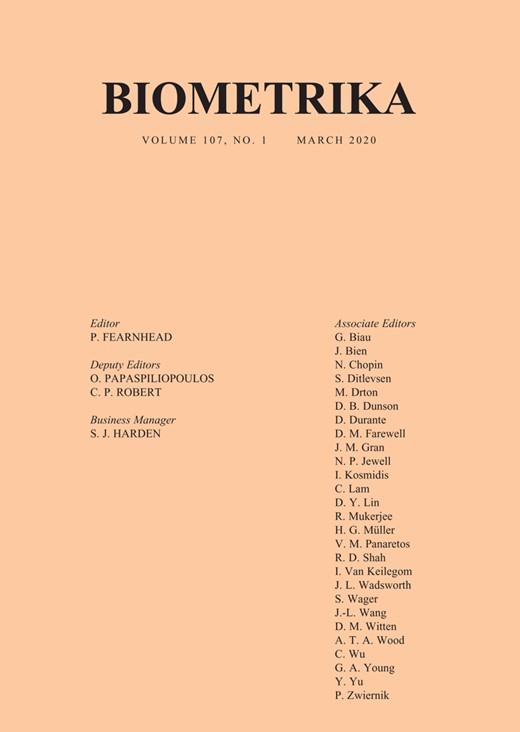-
Views
-
Cite
Cite
D B Dunson, J E Johndrow, The Hastings algorithm at fifty, Biometrika, Volume 107, Issue 1, March 2020, Pages 1–23, https://doi.org/10.1093/biomet/asz066
Close - Share Icon Share
Summary
In a 1970 Biometrika paper, W. K. Hastings developed a broad class of Markov chain algorithms for sampling from probability distributions that are difficult to sample from directly. The algorithm draws a candidate value from a proposal distribution and accepts the candidate with a probability that can be computed using only the unnormalized density of the target distribution, allowing one to sample from distributions known only up to a constant of proportionality. The stationary distribution of the corresponding Markov chain is the target distribution one is attempting to sample from. The Hastings algorithm generalizes the Metropolis algorithm to allow a much broader class of proposal distributions instead of just symmetric cases. An important class of applications for the Hastings algorithm corresponds to sampling from Bayesian posterior distributions, which have densities given by a prior density multiplied by a likelihood function and divided by a normalizing constant equal to the marginal likelihood. The marginal likelihood is typically intractable, presenting a fundamental barrier to implementation in Bayesian statistics. This barrier can be overcome by Markov chain Monte Carlo sampling algorithms. Amazingly, even after 50 years, the majority of algorithms used in practice today involve the Hastings algorithm. This article provides a brief celebration of the continuing impact of this ingenious algorithm on the 50th anniversary of its publication.



